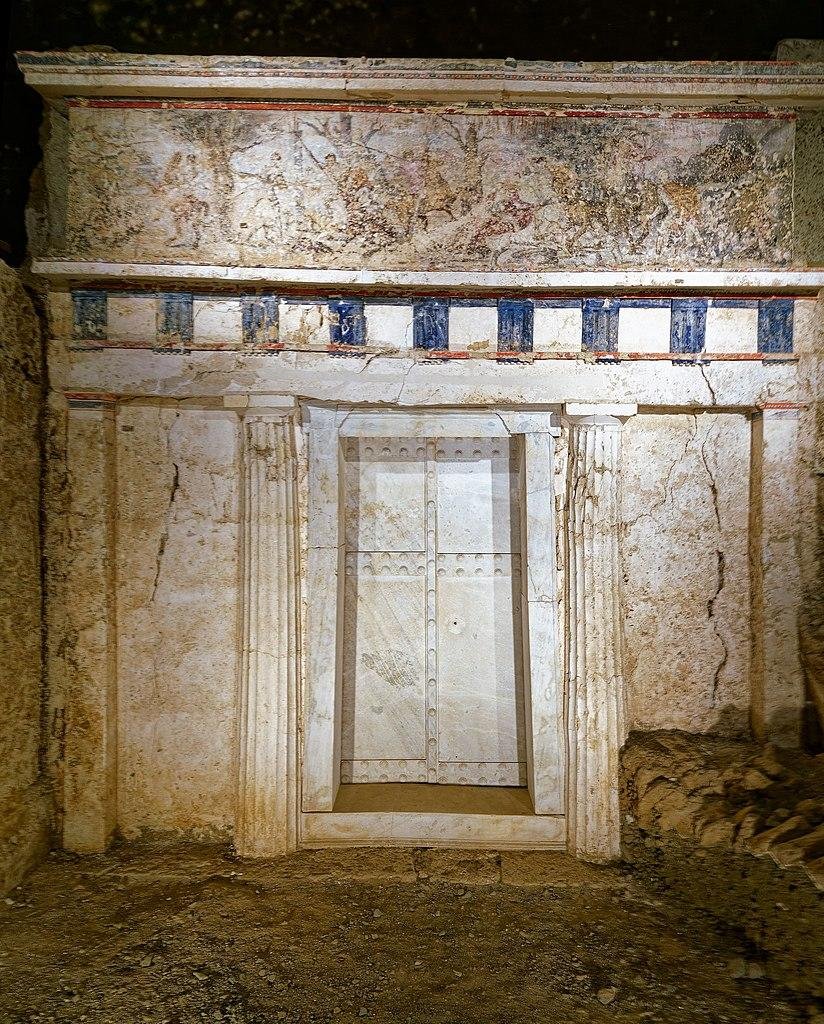A team led by Antonis Bartsiokas of Democritus University of Thrace has presented compelling evidence that a purple and white tunic found in Greece’s Royal Tombs at Vergina might have once belonged to Alexander the Great.
 Detail of the Alexander Mosaic depicting the Battle of Issus between Alexander the Great & Darius III of Persia, from the House of the Faun in Pompeii, Naples Archaeological Museum. Credit: Carole Raddato (CC BY-SA 2.0)
Detail of the Alexander Mosaic depicting the Battle of Issus between Alexander the Great & Darius III of Persia, from the House of the Faun in Pompeii, Naples Archaeological Museum. Credit: Carole Raddato (CC BY-SA 2.0)
The tunic, known as a chiton, was located in Tomb II of the Vergina site, which has long been believed to hold the remains and artifacts of Alexander’s father, Philip II. However, Bartsiokas and his team now argue that Tomb II may actually contain items that belonged to Alexander himself, with the remains inside being those of Alexander’s half-brother, Philip III Arrhidaeus, who was crowned king after Alexander’s death.
This finding was detailed in the Journal of Field Archaeology, where the researchers explained their use of modern scientific techniques, including Fourier-transform infrared spectroscopy and gas chromatography, to analyze the tunic’s material composition.
According to Bartsiokas, the purple hue of the chiton is key evidence. This color, derived from the rare Tyrian purple dye, was typically reserved for elites and was especially prized in ancient Persia, which Alexander famously conquered. The tunic’s composition—cotton layers separated by a mineral-based white fabric, likely hunтιтe—also supports an eastern origin, fitting descriptions of Persian royal garments. Additionally, a golden diadem, a scepter, and a gold oak wreath found near the tunic are thought to further symbolize connections to Alexander’s royal regalia and to the cultural influence of the Persian Empire.
 The royal tombs in Vergina. Credit: Holger Uwe Schmitt/Wikimedia Commons
The royal tombs in Vergina. Credit: Holger Uwe Schmitt/Wikimedia Commons
The debate over the Royal Tombs’ occupants has a long history, intensified after the site’s discovery in 1977 by Greek archaeologist Manolis Andronicos. Andronicos attributed the tomb to Philip II, citing evidence consistent with his known injuries, such as signs of synostosis in a femur, which matched Philip’s limp. However, Bartsiokas argues that the presence of artifacts resembling Alexander’s and Philip III’s raises questions about Andronicos’s conclusions, suggesting that some items in the tombs may belong to different individuals within Alexander’s family.
If confirmed, this new interpretation could profoundly impact historical narratives around the Vergina tombs. The presence of Philip III Arrhidaeus in Tomb II, with Alexander’s possessions, may indicate that Alexander’s empire was divided in part by allocating his personal items, which were then brought back to Greece by his half-brother after Alexander’s death in 323 BCE. This theory would also confirm that Alexander’s actual burial site remains undiscovered, adding to the long-standing mystery of his final resting place.
 Alexander the Great in the Temple of Jerusalem, by Sebastiano Conca (1680–1764). Museo Nacional del Prado, Madrid
Alexander the Great in the Temple of Jerusalem, by Sebastiano Conca (1680–1764). Museo Nacional del Prado, Madrid
The study further proposes that Tomb I at Vergina houses Philip II, his wife Cleopatra, and their newborn child, while Tomb III holds the remains of Alexander IV, Alexander’s teenage son. This arrangement aligns with Bartsiokas’s theory of the tombs as a collective family burial site, showcasing a blend of Macedonian and Persian symbols that reflect Alexander’s ambition to unite both cultures.
More information: Bartsiokas, A. (2024). The identification of the sacred “Chiton” ( sarapis ) of pharaoh Alexander the great in tomb II at Vergina, Macedonia, Greece. Journal of Field Archaeology, 1–13. doi:10.1080/00934690.2024.2409503





